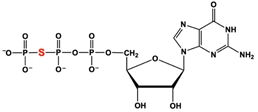Biosignaling pathways play a crucial role in cellular communication, and understanding the differences between stimulatory and inhibitory pathways is essential for grasping how cells regulate their functions. In the context of G Protein-Coupled Receptors (GPCRs), we can explore two distinct signaling pathways: the stimulatory adenylate cyclase pathway and the inhibitory adenylate cyclase pathway.
The stimulatory pathway involves the activation of adenylate cyclase by a stimulatory G protein (Gs). When a ligand, such as epinephrine, binds to a beta-adrenergic GPCR, it induces a conformational change that activates the G protein. This activation leads to the exchange of GDP for GTP on the alpha subunit of the G protein, which then dissociates and activates adenylate cyclase. The enzyme catalyzes the conversion of ATP to cyclic AMP (cAMP), a secondary messenger that plays a vital role in various cellular processes.
In contrast, the inhibitory adenylate cyclase pathway utilizes an inhibitory G protein (Gi). This pathway also begins with a ligand binding to an inhibitory GPCR, causing a similar conformational shift that activates the G protein. However, instead of stimulating adenylate cyclase, the Gi protein inhibits its activity. This results in a decrease in the conversion of ATP to cAMP, effectively reducing the levels of this secondary messenger within the cell.
The interplay between these two pathways is critical for maintaining cellular homeostasis. The stimulatory pathway can be likened to pressing the gas pedal in a car, accelerating the production of cAMP, while the inhibitory pathway acts like the brakes, slowing down this production. This balance allows cells to finely tune their responses to various signals, ensuring that the appropriate amount of secondary messenger is generated based on the physiological context.
In summary, understanding the mechanisms of both stimulatory and inhibitory adenylate cyclase GPCR signaling pathways is fundamental for comprehending how cells regulate their activities through the modulation of secondary messengers like cAMP. This knowledge lays the groundwork for further exploration of biosignaling and its implications in health and disease.


